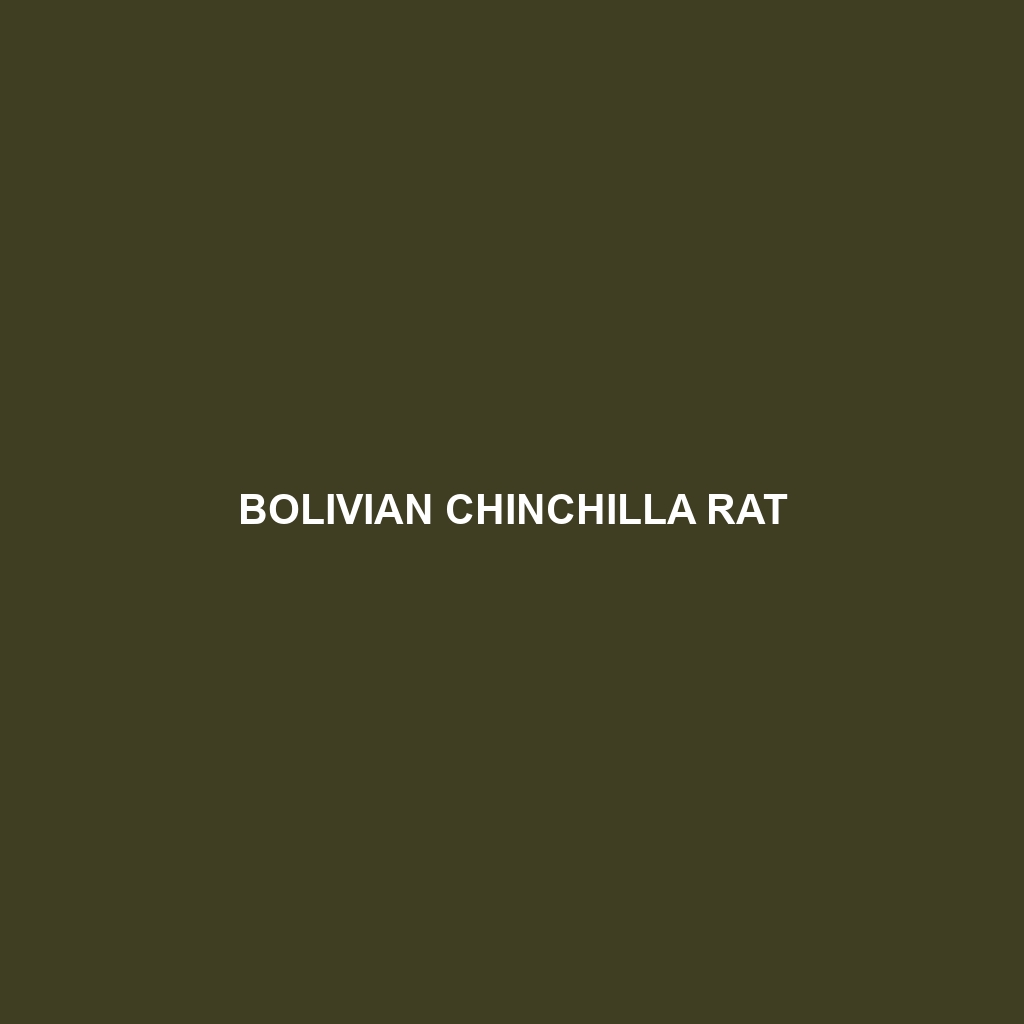Budin’s Chinchilla Rat
Common Name: Budin’s Chinchilla Rat
Scientific Name: Abrocoma budini
Habitat
Budin’s Chinchilla Rat primarily inhabits the high-altitude regions of the Andes mountains, particularly in South America. These rodents are found in rocky and grassy slopes, preferring environments that provide ample cover and a temperate climate. They are most commonly located in countries such as Bolivia and Peru, where they thrive in the unique microhabitats offered by the mountainous terrains.
Physical Characteristics
This medium-sized rodent measures approximately 25 to 30 cm in length, excluding the tail. Budin’s Chinchilla Rat is characterized by its dense, soft fur, which is typically a mix of gray and brown, allowing it to blend seamlessly into its rocky surroundings. A distinctive feature of this species is its large, rounded ears and bushy tail, which serves not only for balance but also for thermoregulation.
Behavior
Budin’s Chinchilla Rat is predominantly nocturnal, foraging for food during the cooler night hours to avoid daytime predators. They are social animals and are often seen in groups, exhibiting playful behaviors and vocalizing to communicate with each other. Their agility and ability to climb make them adept at navigating their rocky habitats, and they are known to dig burrows for shelter and nesting.
Diet
This species primarily feeds on a herbivorous diet that includes grasses, seeds, and roots. Budin’s Chinchilla Rat has also been observed consuming certain types of fruits and flowers, making it an essential seed disperser within its ecosystem. Their feeding habits significantly impact plant regeneration and biodiversity in their mountainous habitats.
Reproduction
Budin’s Chinchilla Rat breeds once a year, typically during the warmer months when food availability is high. After a gestation period of about 30 to 35 days, the female gives birth to a litter of 2 to 5 young. The offspring are born blind and hairless, relying on their mother for warmth and nourishment during their early weeks of life. Parental care is strong, with both parents participating in nurturing their young.
Conservation Status
As of the latest assessments, Budin’s Chinchilla Rat is classified as vulnerable, primarily due to habitat loss and degradation caused by human activities, such as agriculture and mining. Conservation efforts are crucial to preserve their natural habitats and stabilize their populations.
Interesting Facts
Budin’s Chinchilla Rat is one of the less common species in its family, with limited studies conducted on its behavior and ecology. Their soft fur is highly valued, which places additional pressure on their populations due to illegal hunting, further necessitating conservation efforts.
Role in Ecosystem
As a herbivore, Budin’s Chinchilla Rat plays a significant role in maintaining the balance of its ecosystem. By feeding on various plant species and dispersing seeds, they contribute to plant diversity and health in mountainous regions. Additionally, they serve as prey for higher predators, thus being an essential part of the food web in their habitat.

